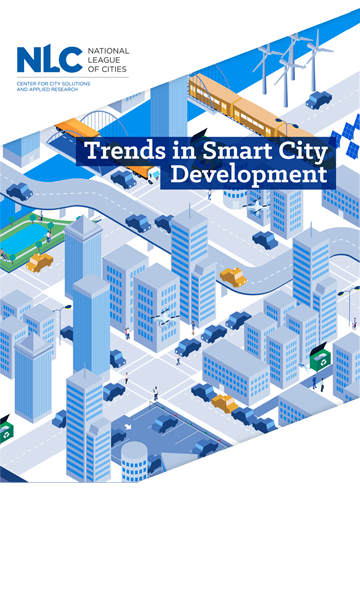Connected devices, whose number is exploding, are contributing to forming the layer of intelligence being built by the smart city via the Internet of Things. The Trends in Smart City Development report, drawn up by the National League of Cities in the United States, identifies at least 17 of these communicating objects.
What do a CCTV camera and a solar panel have in common? A dustbin equipped with a filling sensor or a self-driving car? All these objects belong to the catalogue of equipment of the smart city connected to the Internet of Things (commonly abbreviated as IoT).
The association of U.S. cities (
the National League of Cities) in late 2016 published the “Trends in Smart City Development” report which reviewed smart city projects in the different parts of the United States.
The report places particular emphasis on the Internet of Things which makes objects smart, in particular by enabling them to communicate data between each other. What relationship do these objects have with the smart city? The report explains: “Smart cities are employing the same technology to connect their disparate utility, infrastructure, and public service grids, generating real-time aggregate data. This, in turn, can help cities manage their programs and services more effectively and gauge their impact immediately. The city of the future is an interconnected one, where devices communicate with one another in a constant stream of data that provides real-time information to the public and to the municipality.”
Applications of the Internet of Things in the Smart City
As examples of these connected devices, the
Trends in Smart City Development report cites no fewer than 17 systems, some of which are already common in some cities and the others which soon will be.
- The detection of road congestion via on-board sensors in vehicles providing information about traffic bottlenecks for example.
- Monitoring of water supplies and wastewater systems via sensors able to detect leaks in these networks
- Parking guidance via apps providing information about parking availability from sensors
- The inspection of bridges through various sensors informing teams of civil engineers of any issues
- Self-driving cars that are autonomous thanks to sensors
- Detection of how full dustbins are, used to maximise the efficiency of rubbish collection rounds
- The management of public lighting used to turn street lights on and off depending on weather or traffic conditions
- Fire detection in buildings or outside areas using sensors directly connected to the emergency services
- Energy management and risks related to energy production (via radiation sensors for example)
- The management of solar panels and their energy input into the distribution grid
- Smart urban logistics to provide information about the movement of freight delivery vehicles and inventory
- Smart vehicle fleets inform their managers about the condition of the vehicles or their need for servicing
- Drones assigned to security or rescue missions
- Surveillance cameras assigned to checking areas with no human surveillance
- Body cameras guaranteeing the security of both the police and the public
- Smartphone and wearable device detection to build them into an active internet communication ecosystem
- The deployment of broadband as the reliable medium used as the glue to hold the Internet of Things together.
